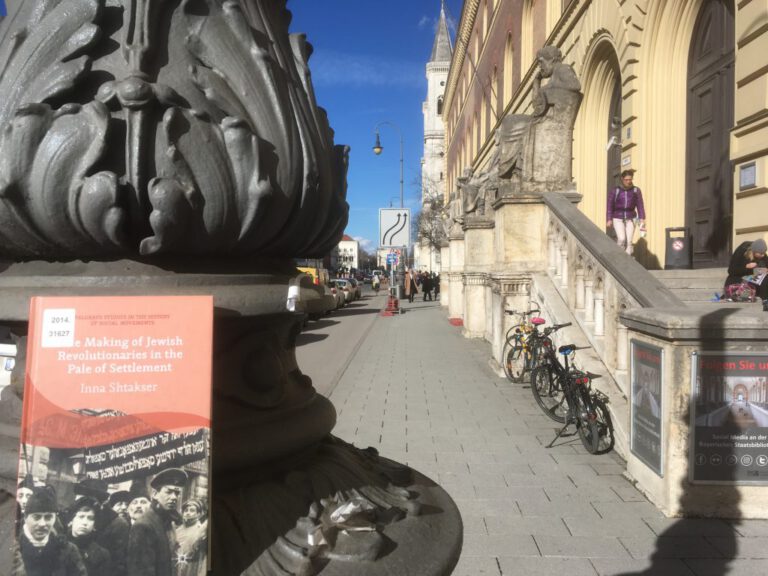A Treasure Awaits You

What’s it about?
It’s about Jewish revolutionary youth in the Pale of Settlement during the Russian Revolutions, particularly working-class youth– their pride and dignity, the communities they thought they were leaving behind, and their return to defend these communities from the never-seen-before violence of the 1905 pogroms, often fighting with nothing more than a stick.
Why do you like this book so much?
Because it is filled with love and passion, and has brought the missing to life. Shtakser knows how to pull these kids out of the nowhere they’ve been doomed to–and not in pieces, but still breathing! A kind of miracle.
How do you even write about something like that?
How can you even find any information about these anonymous people, other than maybe some old photographs?
You can go to the police, so to speak.
They intercepted letters, and the files they made still exist.
Shtakser also looked at autobiographies presented for membership in the Society of Former Political Prisoners and Exiles, composed between 1924 and 1934.
Aren’t history books really long?
Yes, I think they often are.
This book, however, is rather short– just over 150 pages, and is so engagingly written, with such understanding and respect for these young people, that it becomes more a fascinating story told around the table about the real life adventures of a daring
ur
– aunt or uncle you’ve until now only heard rumours about. Fighting the good fight, dedicating their lives to a better future.
The work can not avoid an unusual dynamic, as the reader always carries the tension of knowing what those kids are going to witness, if it wasn’t bad enough already.
Of course, it is also a history book and Shtakser is in conversation with others in her field, but in such a way that the non-professional gains easy access to what is at stake.
I am in awe of her achievement, and of her imposing background in the material—you’ll see what I mean if you decide to include her very informative footnotes in your reading.
It should be added that Shtakser’s fluency in both English and Russian yields marvelous translations of the original material. These are young people throbbing with life, with an immediate vernacular that cuts to the quick.
Do I need to know much about the Russian Revolutions in general, or the one in 1905 particularly?
Not really.
Shtakser is good at summarising what you need to know. She could win a prize for her skill at this.
How is it that an artist’s blog has started out talking about a history book on an obscure topic?
It’s less obscure than you would think.
You will notice that the themes resonate in our own times.Paragraph
Youth stuck in an economic trap with almost no resources to help pull them out, and no hope for a better future. An ideology at hand that can explain the injustices of the world and be used as a tool to provide dignity. Youth culture as a new home and family. The appeal of violence as a means of protecting status. The need for resistance. The struggle with questions of identity.
Can I read it on the train, or at the beach?
Train, yes.
Beach, for practical reasons you’d better not: you will probably be reading a library copy. This book costs a fortune.
Inna Shtakser,
The Making of Jewish Revolutionaries in the Pale of Settlement:
Community and Identity during the Russian Revolution and Its Immediate Aftermath
, 1905–07 (Palgrave Macmillan UK, 2014). 205pp. Bibliography. Index. ISBN: 978-1-137-43022-9.
